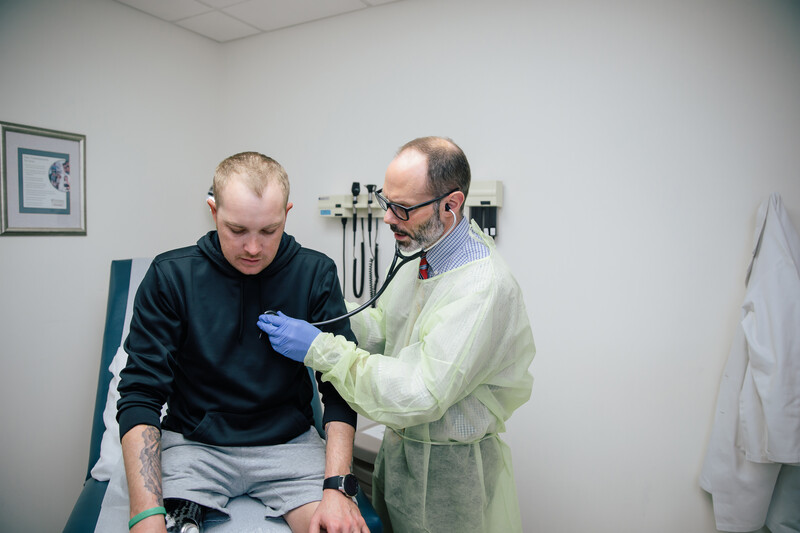Lung transplantation is a surgical option for people with cystic fibrosis who have advanced lung disease. During the operation, diseased lungs are replaced with healthy ones donated from a deceased organ donor.
Median survival for people with CF who have had a transplant has improved. According to the 2019 International Society for Heart and Lung Transplantation Registry report, the median survival for adults transplanted between 1992 and 2017 is 9.9 years. This means that half of individuals transplanted between 1992 and 2017 were alive 9.9 years after transplant.1
Lung transplantation can extend and improve your quality of life, but it involves an extensive evaluation and dedication to living the lifestyle required to keep your new lungs healthy.
The decision to pursue a lung transplant also requires great commitment from your family and friends who are part of your social support system. This is why knowing what to expect will help you and your loved ones plan ahead to determine if transplant is a treatment option for you.
Download this graphic (también disponible en español, El Viaje a Través de un Trasplante de Plumón) to help you start a discussion about the lung transplant process with your family and care team.
Lung transplant, a multiphase process:
|
Phase 1 |
|
|
Phase 2 |
|
|
Phase 3 |
|
|
Phase 4 |
|
|
Phase 5 |
|
|
Phase 6 |
|
|
Phase 7 |
How Are Lungs Allocated?
There are more people who need new lungs than there are available donor lungs. So, to determine who gets new lungs and when, people who are on a waiting list to receive new lungs are given a score. Known as a Composite Allocation Score (CAS), this score is based on factors that are specific to each person and their circumstances. The score ranges from 0 to 100. The higher the score a person has, the sooner they may be offered donor lungs.
This new CAS went into effect in the United States on March 9, 2023, replacing the previous lung allocation score (LAS). Learn more about the CAS from the Organ Procurement and Transplantation Network (OPTN).
According to the Cystic Fibrosis Foundation's Patient Registry for 2023, there were 1,536 people with CF who had received a transplant, including 61 people who reported to have received a lung transplant in 2023. Most lung transplant recipients were age 30 and older.
Where Do Donor Lungs Come From?
Healthy lungs become available when someone dies and has expressed their desire to donate their organs to those in need. If a person dies without letting their families know that they want to donate their organs, their family is not obligated to give doctors permission to donate their lungs.2
This can be a difficult and emotional time. The donor's family will have lost a loved one, and you will be receiving another chance at life. Many transplant recipients want to express their gratitude with the donor's family. However, you will not be allowed to contact the donor's family immediately but may be able to do so after some time has passed, and the donor's family agrees to be contacted. Organ procurement organizations (OPOs) will help facilitate the process of connecting recipients to donor families, so you can contact your local OPO to learn more.
REFERENCES
1. Khush KK, Cherish WS, Chambers DC, et al. The International Thoracic Organ Transplant Registry of the International Society for Heart and Lung Transplantation: Thirty-sixth adult heart transplantation report - 2019; focus theme: Donor and recipient size match. J. Heart Lung Transplant. 2019 Oct;38(10):1056-1066. doi: 10.1016/j.healun.2019.08.004. Epub 2019 Aug 10.
2. Lung Transplant: Glossary of Terms








